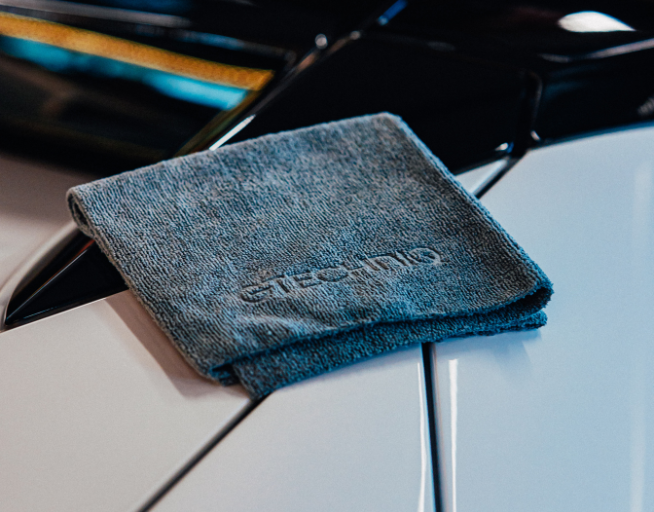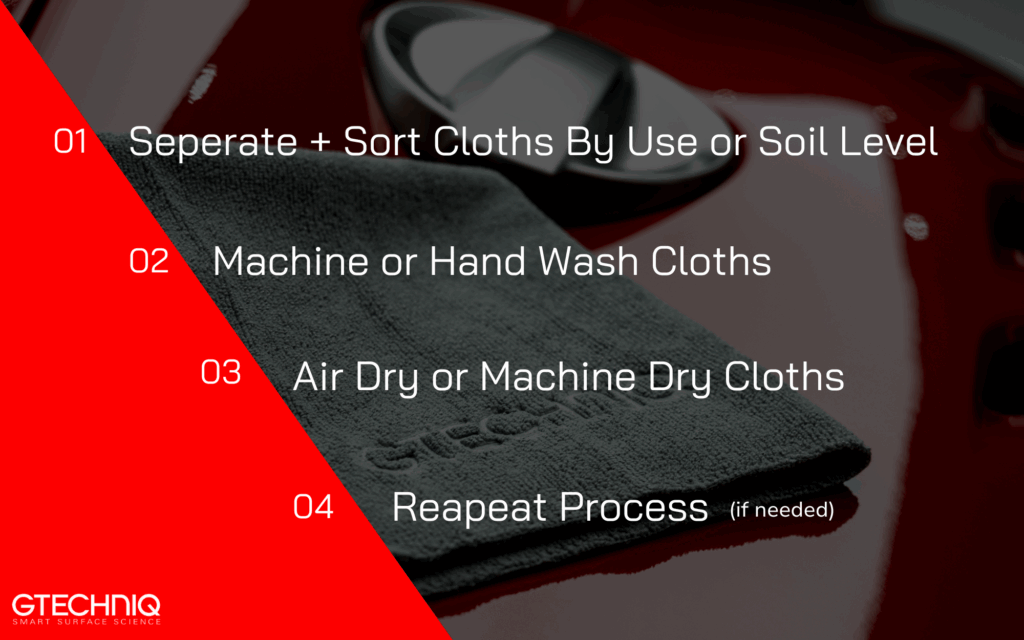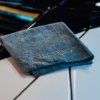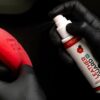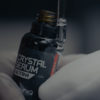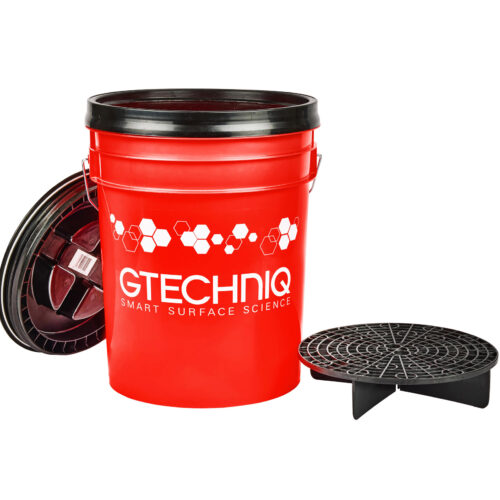The Short Answer: Wash microfiber cloths separately using gentle, fragrance-free detergent and cold or warm (under 105ºF) water. Never use fabric softener, it clogs the fibers. Always dry on low heat (140°F or lower). Avoid washing with cotton towels that shed lint.
You’ve invested in quality microfiber cloths to keep your car looking its best, but are you caring for them properly? Using the wrong products or washing techniques can turn your premium microfiber into lint-covered, streak-leaving cloths.
Fortunately, proper washing methods can extend their life for hundreds of cycles. Here’s how to care for microfiber the right way.
Why Microfiber Needs Special Care
Microfiber cloths are made of ultra-fine synthetic fibers that trap dust, oils, and dirt using positive static charge, making them great for detailing – but also pretty delicate. Washing them with cotton, using too much heat, or adding fabric softener can destroy the fiber structure and reduce cleaning power.
What You’ll Need
Use these products to keep your microfiber towels soft, absorbent, and effective.
- Gentle, Fragrance-Free Liquid Detergent: A mild detergent without dyes, perfumes, or fabric softening additives preserves the synthetic fibers’ cleaning ability. Avoid powdered detergents that can get trapped in the microfiber materials.
- White Vinegar: Use ½ cup in the rinse cycle to deodorize and soften without coating the fibers.
- Mesh Laundry Bags: Added protection from abrasion in the wash.
- Separate Laundry Baskets: Designate cloths for glass, sealant, or interior use to prevent cross-contamination.
Avoid fabric softener, dryer sheets, bleach, or scented detergents, all of which can reduce microfiber performance.
How to Wash Microfiber Cloths: Step-by-Step
Follow these steps for proper care of your microfiber towels:
Step 1: Sort and Pre-Treat
- Sort by purpose: Wash cloths used for glass cleaning separately from those used with sealant or polish to prevent residue transfer.
- Shake out debris: Give your cloths a good shake outdoors or into a trash can to help release loose dirt and dust before washing.
- Pre-rinse if needed: Rinse heavily soiled cloths with warm water to remove buildup.
Step 2: Machine Washing
Machine Washing (Best for Most Loads)
- Load the washing machine properly: Always wash microfiber separately from cotton and other lint-prone fabrics.
- Use minimal liquid detergent: Half the amount you’d normally use for regular laundry is typically recommended. Using too much detergent can coat the fibers.
- Choose the right temperature: Cold for lightly soiled, warm for heavy use. Never hot.
- Select gentle wash cycle: Use a delicate or gentle cycle to protect the fibers from excessive agitation.
- Add white vinegar to rinse: Pour ½ cup into the fabric softener dispenser to naturally soften and deodorize without damaging the cloth.
Hand Washing (Good for Small Loads)
- Fill a clean basin: Use cool water or warm water depending on soil level.
- Add gentle liquid detergent: Use just a small amount of fragrance-free detergent, about 1-2 teaspoons for a basin of water.
- Agitate by hand: Gently work the microfiber cloths in the soapy water, focusing on any heavily soiled areas.
- Soak if needed: Let heavily soiled microfiber cleaning cloths soak for 15-20 minutes.
- Rinse thoroughly: Rinse multiple times with clean water until no soap residue remains on the microfiber materials.
Step 3: Proper Drying
- Option 1 – Low Heat: Keep your dryer at 140°F or lower for best results. High heat can melt the synthetic fibers together.
- Skip dryer sheets: Dryer sheets clog the microfiber and make towels less effective.
- Remove promptly: Don’t let microfiber cloths sit in the drum; prolonged heat exposure can damage the fiber permanently.
- Option 2 – Air Dry: Hang towels in direct sunlight or indoors. Make sure they dry completely before storing.
Common Mistakes That Can Ruin Your Microfiber Cloths
Avoid these common mistakes to help prevent permanent damage to your microfiber towels:
- Using Too Much Liquid Detergent: Excess detergent builds up on the microfiber materials and limits absorption.
- Using Fabric Softener: The waxy residue sticks to the small fibers, making your microfiber less effective.
- Washing with Cotton Towels: Cotton cloths and towels shed lint that sticks to microfiber.
- High Heat Drying: Heat above 140°F can melt the fibers, causing permanent damage.
- Using Bleach: Bleach damages fiber strength and causes microfiber towels to fray and lose absorbency during regular cleaning.
Long-Term Care Tips
Maximize your microfiber towels investment with these maintenance practices:
- Wash Every 3-5 Uses: Sooner for cloths exposed to waxes or harsh chemicals.
- Store Properly: Keep in a dry, ventilated space. Avoid sealed bins.
- Test for Damage: If water beads on the surface, the cloth may be heat-damaged.
- Replace When Needed: Microfiber can last over 400 wash cycles with proper care.
- Keep Types Separate: Don’t mix towels used for glass, interiors, and paintwork.
Accidentally Used Fabric Softener? Here’s How to Restore Damaged Microfiber Cloths
If you accidentally used fabric softener on your microfiber towels, try this restoration method:
- Step 1: Wash microfiber cloths with about 300ml of white vinegar (no detergent)on a normal wash cycle at ~80ºF using cool water.
- Step 2: Air dry and test with water. If it still beads, repeat the wash.
- Step 3: If there’s no improvement, the fibers may be permanently damaged from heat or coating.
Gtechniq Microfiber Accessories
Not all microfiber is created equal. Gtechniq designs microfiber cloths and tools specifically for car care, giving you the right towel for every task – washing, drying, buffing, and more. When maintained properly, each of these accessories will last for hundreds of cycles while delivering professional-grade results.
- MF1 ZeroR Buff Cloth – Ultra-soft, perfect for buffing coatings and leaving a flawless finish without marring paint.
- MF2 Zero Drying Towel – Large, highly absorbent drying towel designed to wick away water quickly.
- MF3 Microfibre Three Pack – A versatile set of everyday cloths for interiors, exteriors, and finishing work.
- MF4 Diamond Sandwich Drying Towel – Advanced layered design for streak-free drying on large panels.
- MF5 Power Glass Cloth – Short pile weave ideal for glass, mirrors, and other reflective surfaces.
MF6 Haze Buster – Specially developed for safely removing haze after coatings cure. - MF7 Short Loop Drying Towel – Compact drying towel for smaller areas or quick wipe-downs.
- WM2 Microfibre Wash Mitt – Plush microfiber mitt that safely lifts dirt when washing without scratching paint.
- AP5 Microfibre Applicator Pad – Designed for smooth and even application of coatings and dressings.
By keeping each towel type separate and caring for them correctly, you’ll always have the right tool ready for your detailing routine.
Using Microfiber Cloths with Gtechniq Products
Clean microfiber cloths are perfect partners for our professional-grade car care products. Here’s how to get the best results:
- G Wash: Use a clean microfiber cloth with our pH-neutral car wash soap for safe and streak-free washing. The gentle formula won’t leave residue that clogs your microfiber materials.
- We recommend the WM2 Microfibre Wash Mitt
- W5 Citrus All Purpose Cleaner: When pre-treating heavily soiled areas, use microfiber cloths to work W5 into surfaces before your main wash cycle.
- We recommend the MF1 ZeroR Microfibre Buff Cloth
- Ceramic Coatings: When applying ceramic coatings, use microfiber cloths designed for leveling and residue removal to achieve a flawless finish.
- We recommend the MF1 ZeroR Microfibre Buff Cloth and the MF6 Haze Buster
Pro tip: Keep separate sets of microfiber towels for different products to prevent cross-contamination and ensure the best results with each application.
Keep Your Microfiber Working Like New
With a little care, your microfiber towels will continue to deliver professional-level results. Wash them right, skip the softeners, and avoid high heat to get the most out of every detailing session.
For microfiber towels built for the job, explore our full line of high-performance accessories.
Frequently Asked Questions
Can I wash microfiber cloths with regular laundry?
No, always wash microfiber cloths separately from cotton towels and other fabrics. Cotton cloth sheds lint that sticks to the synthetic fibers, reducing their cleaning effectiveness and making them less absorbent.
Why can’t I use fabric softener on microfiber cloths?
Fabric softener creates a waxy coating that clogs the tiny synthetic fibers, preventing them from trapping dirt and dust effectively. Once coated, your microfiber cleaning cloths will stop absorbing properly and may leave streaks on surfaces.
What’s the maximum temperature I can use to dry microfiber cloths?
Keep your dryer at 140°F or lower to prevent melting the synthetic fibers. High heat can permanently damage the microfiber materials by fusing the fibers together, making them feel stiff and reducing their cleaning power.
How often should I wash my microfiber towels?
Wash lightly soiled microfiber cloths after 3-5 uses, but clean heavily soiled ones immediately after use. Glass-cleaning towels should be washed more frequently to prevent streaking, while microfiber cloths used with Gtechniq products should be washed after each detailing session. Additionally, we do not recommend reusing or washing coating towels as they will no longer be absorbent and could cause the cloth to scratch surfaces. Instead, downgrade them to shop or utility towels.
Can I restore microfiber cloths that have been damaged by fabric softener?
Try washing the damaged microfiber cloths with white vinegar (about 300ml) and no other cleaning product on a cool water cycle. If water still beads on the surface instead of soaking in, the fabric softener damage may be permanent and you’ll need to replace the cloths.
